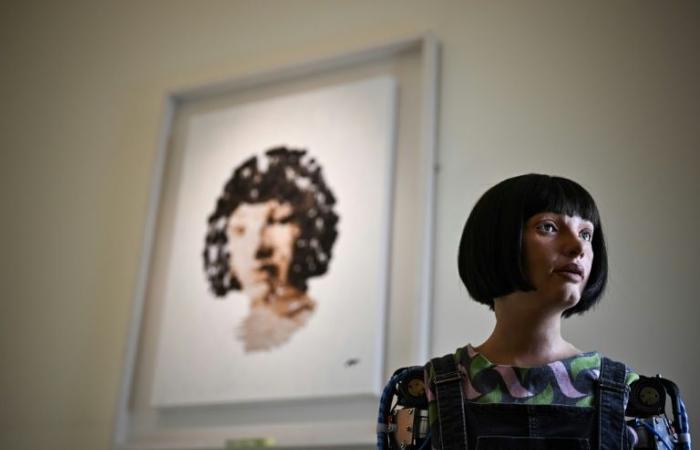A portrait of English mathematician Alan Turing was sold for 1.2 million euros on Thursday, becoming the first work of art created by a humanoid robot sold at auction, Sotheby’s announced.
The work, entitled “AI God”, created by “Ai-Da”, the world’s first ultra-realistic robot artist, shattered forecasts to reach $1.3 million, when of an online sale by the auction house.
“The record sale price achieved today for the first artwork by a humanoid robot artist to be put up for auction marks a milestone in the history of modern and contemporary art and reflects the growing intersection between the technology of artificial intelligence and the global art market,” the auction house said.
“The core value of my work is its ability to serve as a catalyst for dialogue about emerging technologies,” said the robot artist, who speaks through AI.
According to Ai-Da, the “portrait of pioneer Alan Turing invites viewers to reflect on the divine nature of AI and computing while considering the ethical and societal implications of these advances.”
The ultra-realistic robot resembles a woman with big eyes and a brown wig, and is one of the most advanced in the world.
Ai-Da is named after Ada Lovelace, considered a computer pioneer, and was designed by Aidan Meller, a specialist in modern and contemporary art.
This robot artist, who uses AI to create paintings or sculptures, has cameras in his eyes and his bionic hands. It moves and expresses itself autonomously, without human intervention.
“The greatest artists in history have grappled with their times, and have both celebrated and questioned changes in society,” said Mr. Meller.
Alan Turing, a mathematician and cryptologist during the Second World War, considered one of the fathers of computing, had been concerned about the future uses of AI since the 1950s.
The “dark tones and broken facets of the face” of the mathematician’s portrait seem to suggest “the difficulties that Alan Turing warned us about when it comes to managing AI,” noted Mr. Meller.
Ai-Da’s works ask us “where the power of AI will take us, as well as the global race to harness that power,” he added.
■






